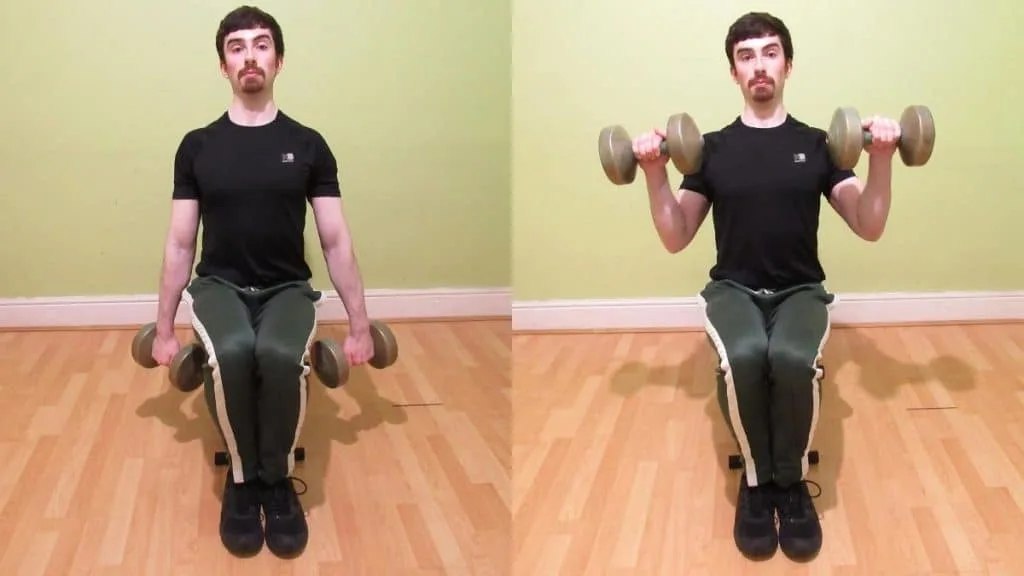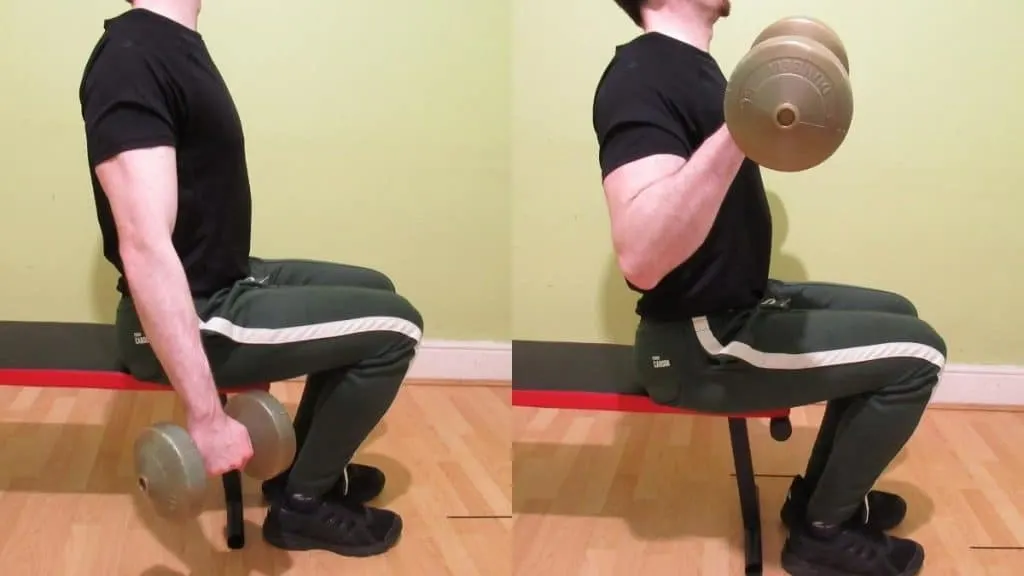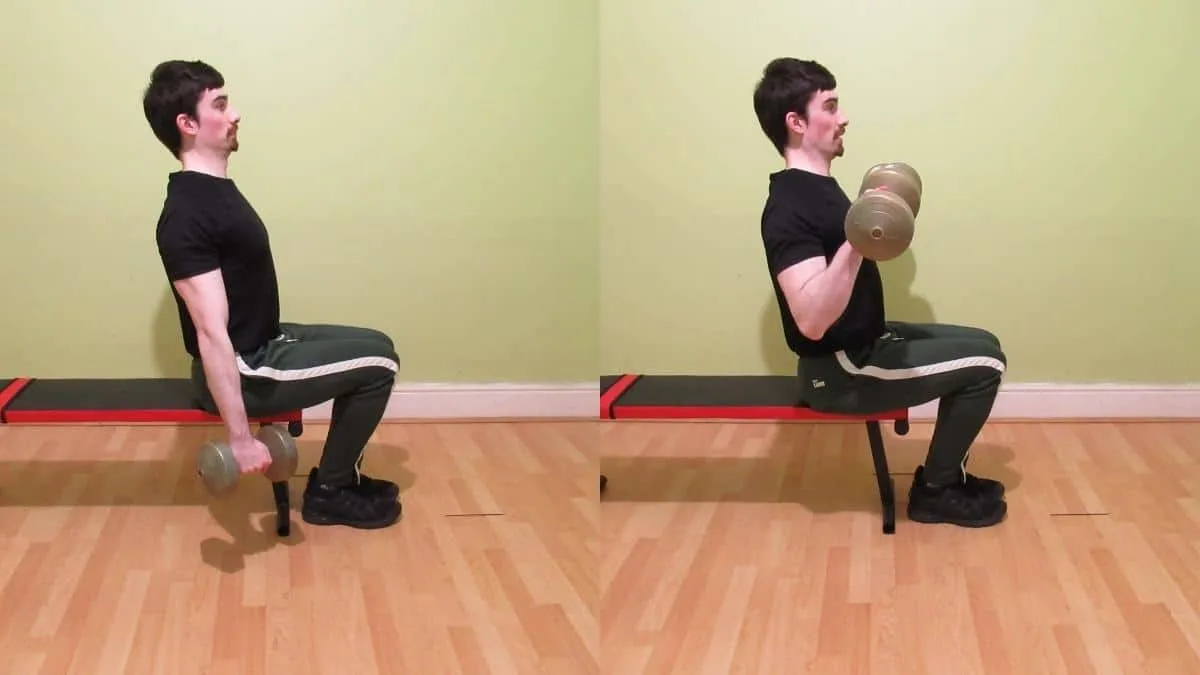Knowing the biceps brachii origin and insertion, you can shift the resistance on seated DB curls away from your biceps onto your brachioradialis and brachialis muscles by using an overhand grip.
The following tutorial shows you how to perform the seated reverse dumbbell curl with the optimum form. Then you’ll learn the top training tips for getting the most from your reverse curl efforts.
Related: Best shoulder and bicep workout
Seated reverse dumbbell curl exercise details
- Main Muscles: Brachialis, brachioradialis, biceps brachii
- Secondary Muscles: Forearm extensors
- Exercise Type: Strength
- Exercise Mechanics: Isolation
- Difficulty Level: Beginner
- Equipment Needed: Weight bench, dumbbells
How to perform seated reverse dumbbell curls
- Grab two dumbbells and sit on a weight bench.
- Hold the dumbbells with an overhand grip and make sure that your elbows are tucked into your sides.
- Curl the weights toward your front delts while keeping your elbows still.
- Keep lifting until the tops of your forearms and your biceps make contact.
- Flex your arms at the top of the rep and then lower the weights under control until your elbows reach full extension.
- Repeat for 3-5 sets of 8-15 reps.
Seated reverse dumbbell curl training tips

Sitting dumbbell reverse curls may help to better isolate your brachialis and brachioradialis than the regular reverse dumbbell curl. This is because you can’t cheat the weight up with your legs, back, and hips when these body parts are stabilized by the bench. As such, it’s easier to keep the majority of the tension on the target muscles.
Moreover, compared to cable reverse curls, the seated reverse dumbbell curl requires less core strength. Again, this lets you place more tension on your arms because it’s easier to focus on the working muscles when you don’t have to concentrate on stabilizing your core.
Here are 5 more tips to get the most from sitting reverse dumbbell curls:
- Keep your elbows as still as possible to minimize front delt involvement.
- Slow down your rep tempos to target the brachialis.
- Perform this exercise first in your routine if your brachioradialis is lagging behind your biceps in development.
- Pin your elbows into your sides and simply focus on moving your lower arms up and down.
- Lower the weights all the way down so that your muscles get a good stretch, not just a strong contraction.
You can also read our seated curls vs standing curls comparison to learn which position is the most effective for building the biceps and their surrounding muscles.
Read More: Advanced bicep exercises
Conclusion

Overall, the seated reverse dumbbell curl is a useful exercise for developing muscular arms. It’s more convenient than the likes of overhand preacher curls because you only need a couple of dumbbells and a bench. In fact, you could skip the bench and do this drill on the sofa if you wanted. The only fundamental requirements are weights and a place to sit.
Like with sitting Zottman curls, this exercise helps you to keep the tension on the target muscles because there’s less room for mistakes when you’re sat down. Specifically, you can’t swing the weights up with your back and legs because both of these body parts are stabilized by the floor and bench, respectively.
Just make sure to keep your elbows as still as possible during the exercise. There’s no need to lift overly heavy poundages on this movement, so focus on using the strictest possible form as explained in the tutorial, and the arm gains will come.

